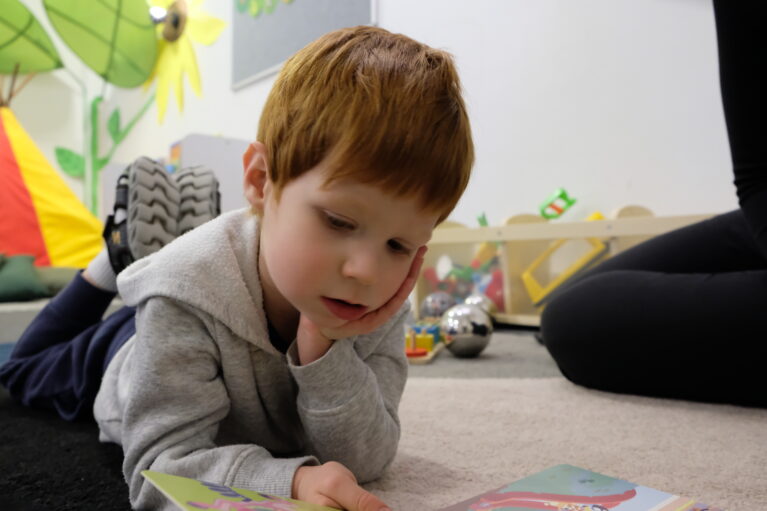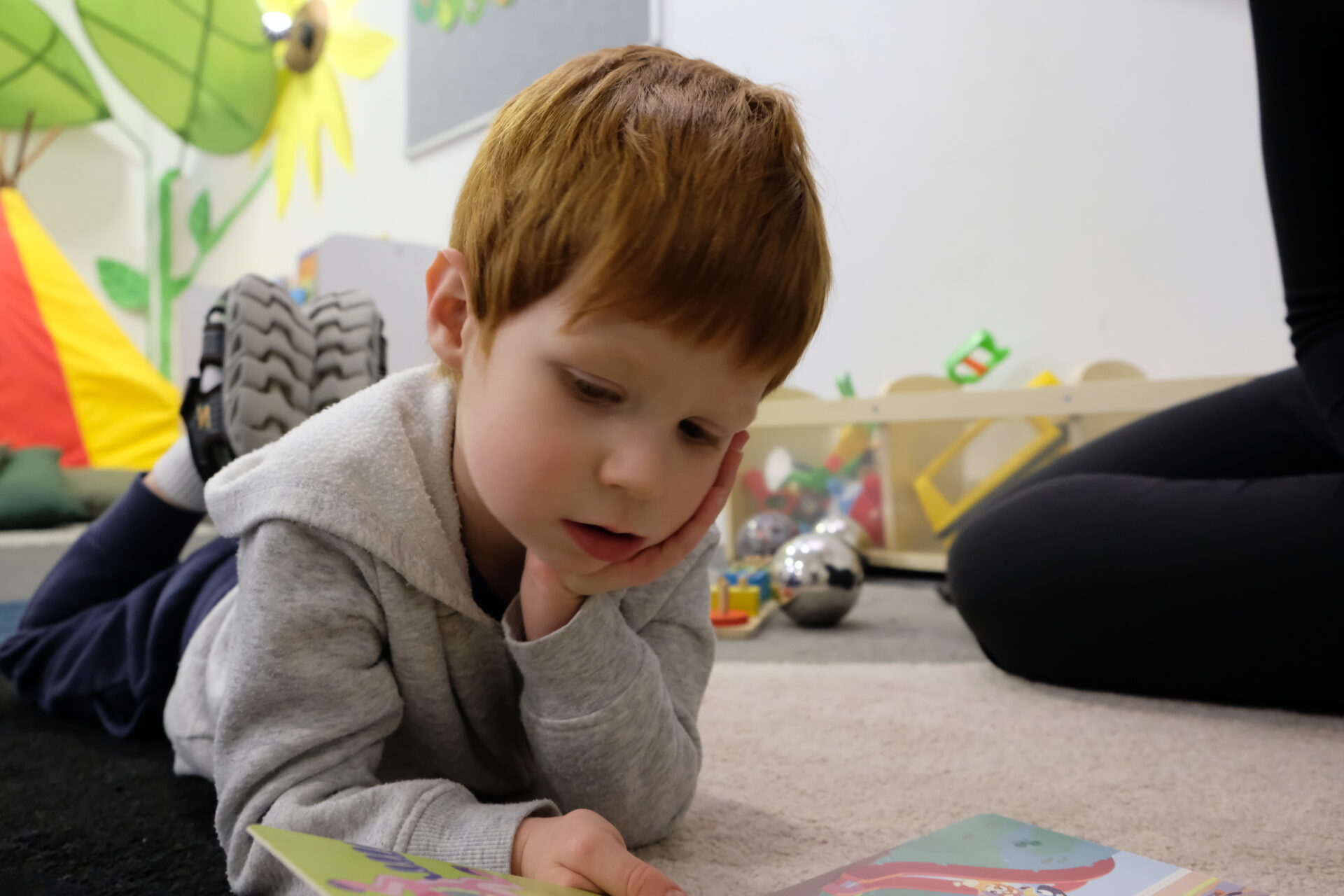Encouraging independent play

Many parents report that they would like their child to be able to occupy themselves without the need for constant adult direction or supervision. Playing independently can be challenging for many autistic children. Often there are communication and sensory considerations or behavioural barriers that impact their ability to play creatively or interactively with others. Motivation to engage in and sustain play with toys and activities may need to be developed, given many children have narrow or limited interests.
However, despite these challenges, children with autism can develop play and leisure skills with the right support and intervention.
Some tips:
What does your child find motivating? Observe your child: what types of activities do they seek out and enjoy? For example, some children love jigsaw puzzles. Others prefer physical activities, such as running or jumping.
When we know about a child’s motivations, we can encourage and build upon them, thereby widening their interests. For example, if your child loves puzzles, you could gradually introduce new ones. If they enjoy being physical, you could help them explore new activities such as riding a scooter or trying the monkey bars. You can also use your child’s motivators and interests as reinforcement to help them learn new activities. For example, encourage your child to complete a short, simple task such as a shape sorter in exchange for their motivating item. Use language such as “first – then” (e.g. “first shape sorter then trampoline”) and provide assistance or prompting to complete the first task, when necessary. At first, when you introduce the new activity it is likely to be less preferred, or the child may not understand how to do it. However, frequent practice and a consistent, positive approach can make these activities more enjoyable over time, thereby gradually broadening your child’s interests and play skills.
Start with activities that have a clear end or purpose, such as a ring stacker, stacking blocks, a shape sorter or a simple jigsaw puzzle. Initially, your child does not need to complete the whole activity; instead, just help them do 1 or 2 pieces only. Short, successful and frequent mini-practice sessions will be most effective. As your child begins to understand what to do, you can fade your assistance and increase the number of pieces until they can eventually complete the whole task.
You can also introduce and explore simple cause and effect toys where your child does something for an action to happen (e.g. put ball in – it goes down ball run or wind up toy – it moves), or play with sensory type toys (e.g. fidget toys, squishy balls, water timers, playdough, water play, kinetic sand etc.).
Set up an activities box or shelf with a variety of toys and activities your child enjoys and can do and place it where your child can sit to play (e.g. table or rug). The activities could include a combination of task completion, cause-effect, sensory or construction type activities like blocks or Lego.
Encourage your child to play independently for a short time, for example, starting with 1 minute and gradually increasing to 5 to 10 minutes. Before starting, tell your child what you would like them to do (e.g. “I’d like you to play with your activities box for 5 minutes, then you can have your favourite toy”). It may help your child if you can show this visually also (e.g., the activity to complete is on the table/rug, and the favourite toy is with you).
For some children, using a visual timer may be helpful, setting it when the playtime starts and placing the timer where the child can see it. When the independent playtime has elapsed, provide access to your child’s favourite toy or activity that you mentioned earlier (e.g. “I’m so proud that you did that shape sorter all by yourself, you can jump on the trampoline now”).
As you are teaching your child this new skill of playing independently, you can provide praise for playing on their own. Initially, this praise might need to be given frequently while they’re playing, then it can be faded over time. Similarly, you may wish to initially stand or sit close by to help your child maintain their attention on the play activities, but over time you can move away so the child learns to continue to play by themselves.
Other considerations:
Teach first – many children benefit from being individually taught how to play first, before expecting them to play by themselves. For example, making regular time to teach them how to complete the shape sorter or how to play a game such as Backyard Bingo will be effective and important.
Consistency across settings – talk with your child’s intervention team about the play skills you are focusing on at home – they can also work on these same goals. This will mean your child will learn these new skills quickly, and they can become more confident and independent when playing at home.
Have toys and activities easily accessible at home – this may seem simple, but for many young children, the saying “out of sight, out of mind” is often true. When toys and activities are readily available, for example, on a bookshelf, toy shelf or in a basket, children are more likely to explore and play with them.
Rotate toys frequently to keep interest levels high.
Consider age and developmentally-appropriate toys for your child and consider potential safety risks, for example, no tiny Lego or puzzle pieces for a child who may put them in their mouth.
Have fun! You don’t need to spend a lot of money on toys and games for kids to want to play. A cardboard box can be turned into a rocket ship or a cool cubby house. A blanket can become a fun chasey game, to hide a teddy, or some children enjoy being wrapped up as a “sushi roll”!
Seek advice – If you have concerns about your child’s play skills, talk with your child’s intervention team. Many professionals such as Behaviour Analysts, Child Psychologists, Speech Pathologists and Occupational Therapists are experienced in helping to improve children’s play skills.
About the author
Melissa Wall is Autism Partnership’s Queensland Clinical Director, an Educational and Developmental Psychologist and Board Certified Behaviour Analyst. She has been working with children with ASD and their families for 23 years in Australia and overseas.
Subscribe to our newsletter
For information about our FREE parent talks, handy resources and all our latest news.




